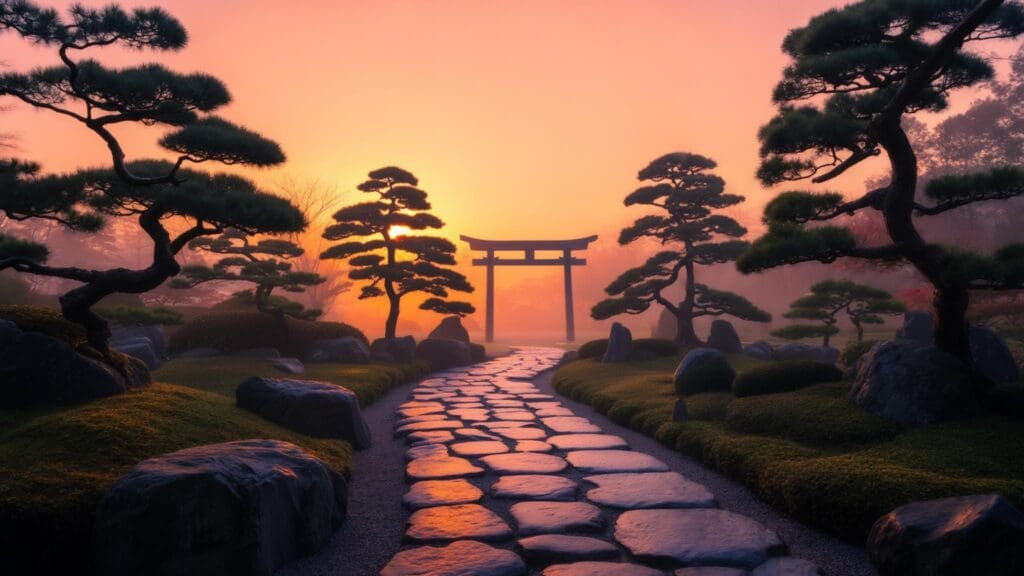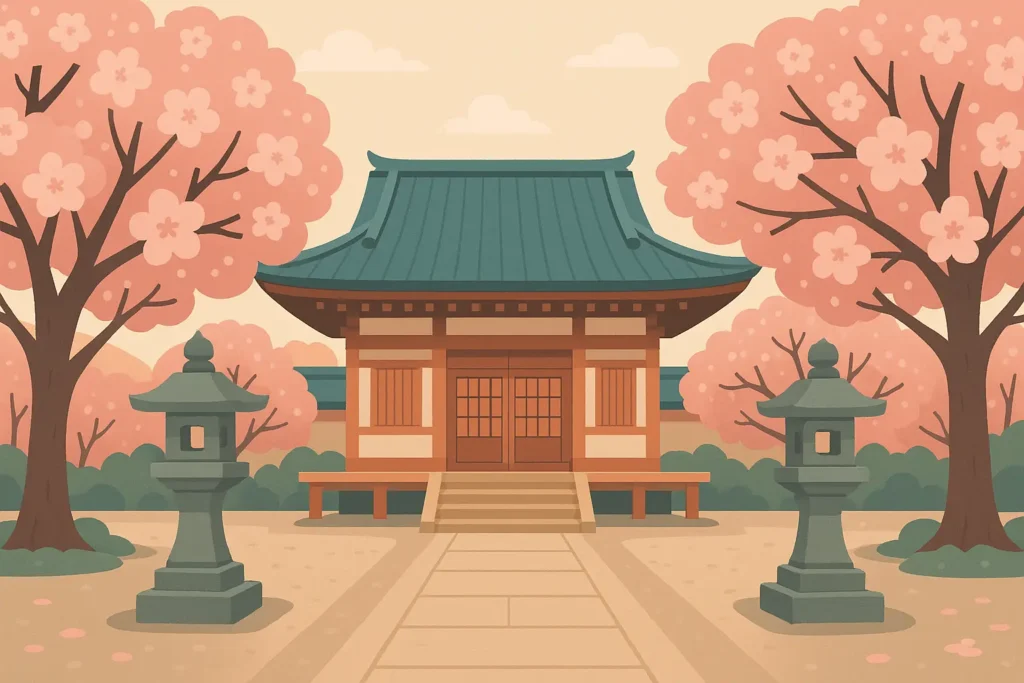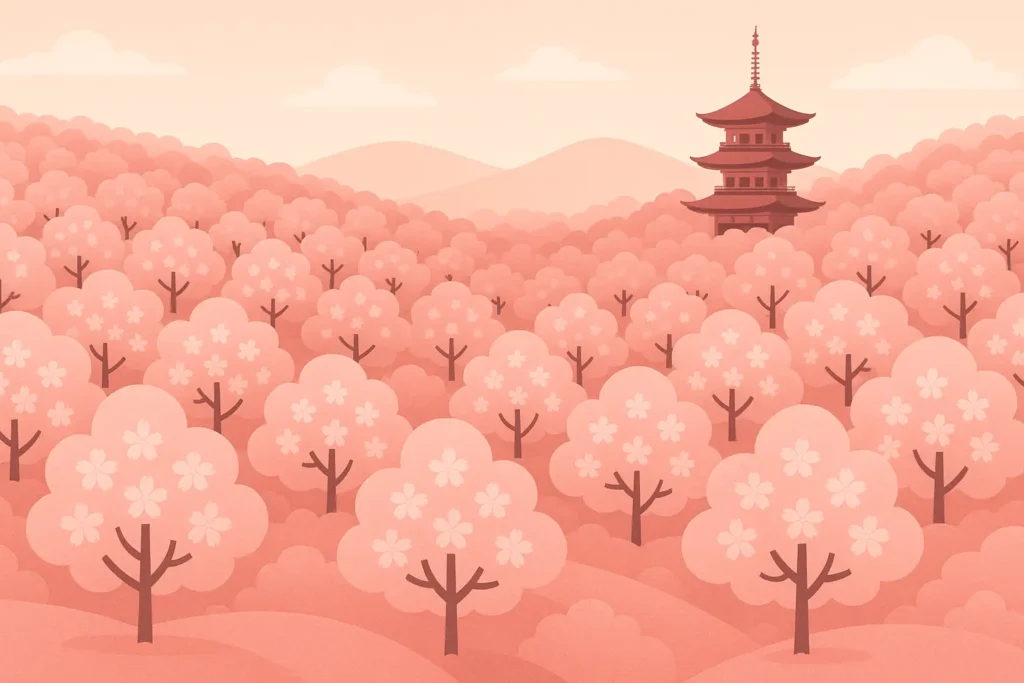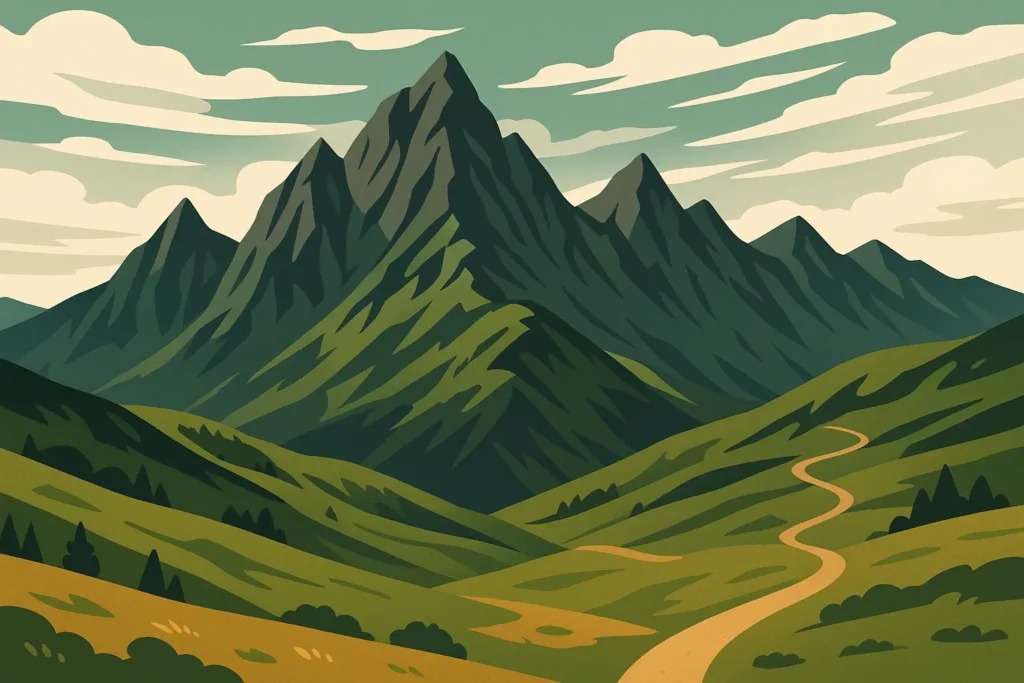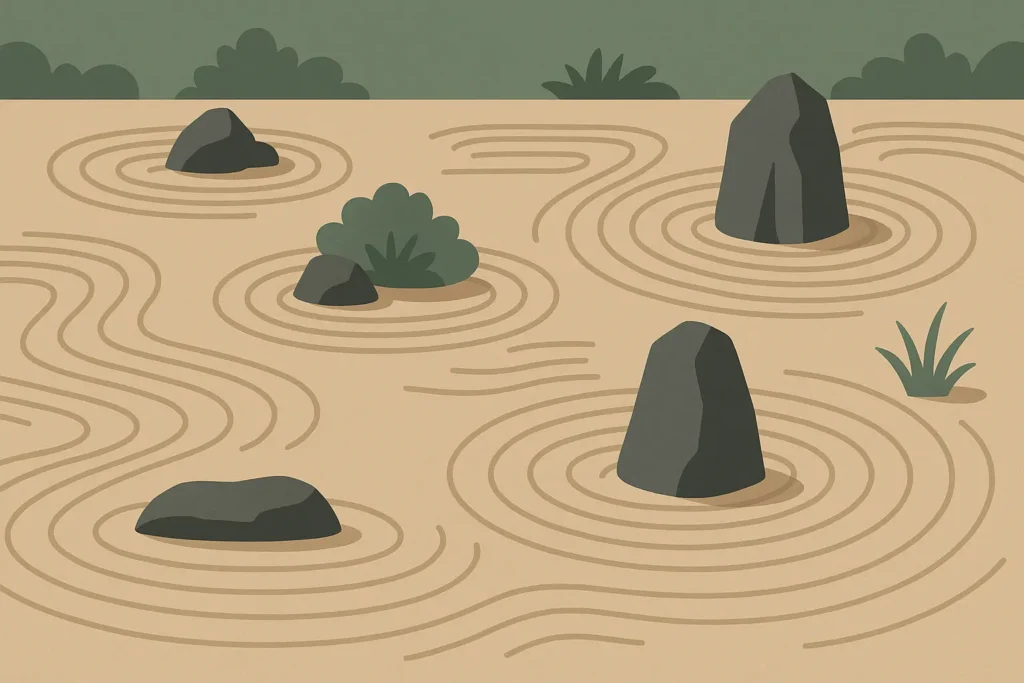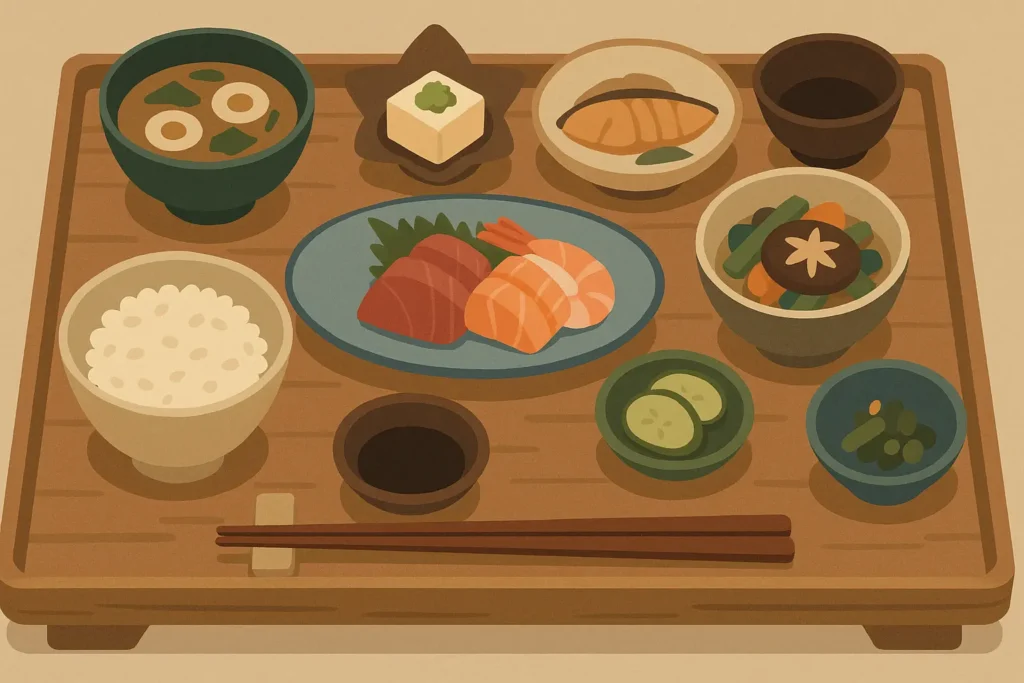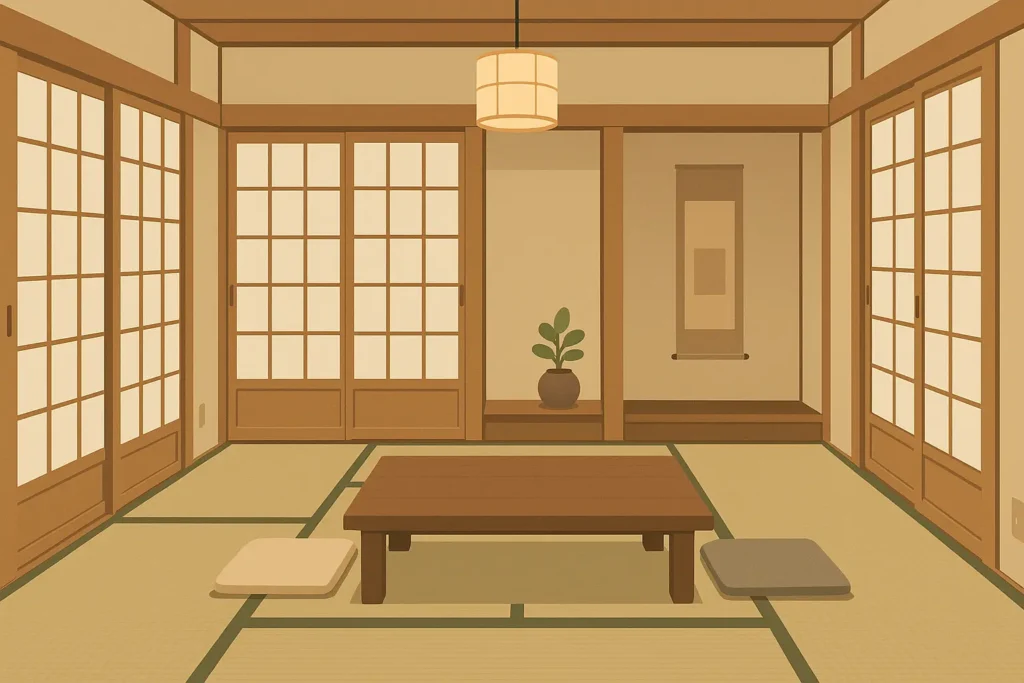Picture this: It’s 2 AM, I’m surrounded by empty coffee cups and about 47 browser tabs of Japan travel sites. Sound familiar? I’d been dreaming of visiting Japan for years, but every time I tried to plan the trip, I’d get completely overwhelmed. Should I blow my budget on a fancy ryokan or save money for experiences? Skip the touristy spots or embrace them? And don’t even get me started on trying to time cherry blossom season…
Stop stressing over travel decisions — our Vacation Planner builds personalized itineraries that balance budget, timing, and unforgettable experiences.
Japan welcomed over 31 million international visitors in 2019, making it one of the world’s most sought-after travel destinations. If you’re feeling paralyzed by all the incredible options (temples! cities! Mount Fuji! hot springs!), you’re definitely not alone. I’ve put together 25 different ways to experience Japan – from budget backpacking to luxury splurging – because honestly, the abundance of choices can feel both exciting and terrifying.
Quick Resources:
-
Build your dream Japan trip itinerary with our Vacation Planner
-
Planning a romantic honeymoon in Japan? Use our Honeymoon Planner
-
Find your perfect travel look with our Free Color Analysis Quiz
-
Explore all our Wedding & Travel Tools
Here’s what nobody tells you about Japan planning: You WILL second-guess yourself. A lot. I spent three weeks debating whether to book that expensive ryokan, then panicked it would sell out. Spoiler alert: it was worth every penny, but the stress nearly killed me. That overwhelming feeling of wanting to see everything but having limited time is exactly why I’ve broken down these Japan trip ideas into manageable chunks.
Streamline your travel planning with the Vacation Planner — it turns endless options into a perfectly structured itinerary.
TL;DR
- Japan offers 25+ distinct Japan itinerary types across six main categories, from classic Golden Route tours to specialized cultural immersion experiences
- Let’s talk money without the heart palpitations – budget ranges from $100-400+ per day depending on your accommodation style and how much you love fancy dinners
- Cherry blossom season is magical but requires booking 6-12 months ahead (and yes, it’s crowded and expensive)
- Physical requirements range from gentle temple strolls to “why did I think climbing Mount Fuji was a good idea” moments
- Some trips let you stay surface-level tourist, others dive deep into spiritual retreats that might change your life
- The JR Pass is basically Japan’s way of saying “pay once, ride all you want” – 7-day passes run $280, 21-day passes hit $580
- First-timers should stick to the Golden Route (Tokyo-Kyoto-Osaka) before getting adventurous
- Pro tip: Some experiences need 12+ months of planning, so start early if you want those Instagram-worthy moments
Planning Your Perfect Japan Adventure
Okay, let’s be honest – Japan isn’t a destination you can wing. Trust me, I tried that approach once and ended up eating convenience store sandwiches for three days because I couldn’t figure out how to order at restaurants. The country’s complexity demands thoughtful planning, especially when you’re trying to maximize limited vacation time and not blow your entire savings account.
Your Japan experience hinges on understanding what you actually want out of this trip. Are you the type who gets excited about getting slightly lost and discovering hole-in-the-wall restaurants that don’t have English menus? Or do you prefer having a translator app, a backup plan, and reservations for everything? Neither approach is wrong – but knowing which type you are will save you from a lot of mid-trip panic attacks.
Discover your ideal trip style with our Free Color Analysis Quiz — it even helps match your travel wardrobe to your destination vibes.
The beauty of having 25 different Japan vacation ideas is that you can find one that matches your exact circumstances, budget, and tolerance for adventure. But first, we need to figure out what those circumstances actually are.
Essential Factors for Japan Itinerary Success
Okay, so before you fall down the same rabbit hole I did, let’s talk about the five things that actually matter when planning your Japan travel itinerary: how much money you want to spend (or can afford to spend), when you’re going and for how long, what kind of traveler you are, how deep you want to dive into the culture, and the boring-but-important logistics stuff.
Budget Considerations That Make or Break Your Trip
Let’s talk money without the heart palpitations. Yes, Japan can be expensive, but it doesn’t have to break the bank. I’ve done Tokyo on $80 a day (lots of convenience store meals and capsule hotels), and I’ve also splurged $300 on a single kaiseki dinner. Both were worth it for different reasons.
Your accommodation choice basically determines whether you’re eating ramen for six months before your trip or after it. Those Instagram-worthy luxury ryokans? They’ll run you $300-800 per night, but you get tatami rooms, incredible kaiseki dinners, and hot spring access that feels like stepping into a different world. Business hotels are your sweet spot at $80-150 nightly – clean, efficient, and perfectly located. Budget hostels keep costs down at $20-50 per night, though you’ll be sharing space and missing out on some of that traditional atmosphere.
Compare budgets and build a realistic Japan plan with the Vacation Planner — perfect for mapping hotels, costs, and must-do experiences.
I know, I know – another budget table. But trust me, this one actually helped me figure out I could afford Japan without eating ramen for six months afterward:
| Budget Category | Daily Cost Range | Accommodation Type | Dining Style | Transportation |
|---|---|---|---|---|
| Budget | $100-150 | Hostels, Capsule Hotels | Street food, Convenience stores | Local trains, Buses |
| Mid-Range | $150-250 | Business hotels, Mid-range ryokans | Restaurant meals, Some kaiseki | JR Pass, Limited express |
| Luxury | $250-400+ | Premium ryokans, 5-star hotels | High-end kaiseki, Michelin dining | Private transfers, First-class rail |
The JR Pass is basically Japan’s way of saying “pay once, ride all you want” – like a theme park wristband, but for trains. And trust me, you’ll want to ride ALL the trains. The 7-day pass costs around $280, 14-day runs $450, and 21-day reaches $580. These passes pay for themselves if you’re hopping between cities, but if you’re staying put in Tokyo, skip it.
Food costs can swing wildly depending on your adventure level. Street food and convenience store meals (which are surprisingly good in Japan) run $5-15 per meal. Mid-range restaurants where you point at pictures and hope for the best charge $20-40. Those once-in-a-lifetime kaiseki experiences at renowned establishments can hit $100-300 per person, but honestly? They’re cultural experiences as much as meals.
Sarah’s Reality Check: Sarah chose mid-range accommodations ($120/night), grabbed a 14-day JR Pass ($450), and mixed convenience store breakfasts ($8) with restaurant lunches ($25) and dinner splurges ($60). Her daily average came to $185, proving that quality Japan experiences don’t require selling a kidney.
Time Duration and Seasonal Strategy
Here’s the truth about timing: Seven days barely scratches the surface – you’ll leave wanting more. Ten to fourteen days lets you actually breathe and enjoy places instead of just checking them off a list. Three weeks opens up possibilities for those “I can’t believe this is real” moments that happen when you’re not rushing everywhere.
Ready to maximize your time abroad? Use our Vacation Planner to create balanced, efficient, and flexible travel schedules.
Now, about seasons – this is where things get interesting (and potentially expensive). Cherry blossom season (March-May) is absolutely magical, but it’s also when every human on Earth decides to visit Japan. Expect premium pricing, massive crowds, and the need to book everything 6-12 months in advance. I’ve seen grown adults cry when the petals fell early – just saying.
Summer festivals (June-August) give you incredible cultural experiences, but fair warning: Japanese summer humidity is no joke. You’ll sweat through everything you own, but those festival moments are pure magic. Fall foliage (September-November) is honestly the sweet spot – gorgeous weather, stunning colors, and reasonable crowds. Winter (December-February) is perfect for skiing, hot springs, and having temples mostly to yourself, plus everything costs less.
Travel Style and Physical Requirements
Some people thrive on the awkward moments – like accidentally ordering chicken hearts instead of chicken (guilty!). Others prefer having a translator app and a backup plan for every possible scenario. Know which type you are before you go, because Japan will test both approaches.
Pro tip I learned the hard way: Don’t assume you can walk everywhere in Tokyo. My Fitbit thought I was training for a marathon, and my feet staged a rebellion by day three. Extensive walking, stairs, and navigating public transportation are unavoidable in most Japan trip plans. Traditional ryokans have floor seating and step-up baths that might challenge anyone with mobility issues. Mountain hiking requires actual fitness – not just “I walk to the coffee shop” fitness.
Cultural Immersion Depth
This is where you decide if you want to stay comfortably on the tourist trail or dive headfirst into experiences that might change you. Surface-level tourism hits the major temples and popular neighborhoods – totally valid and still amazing. Moderate immersion gets you into cultural workshops, traditional dining, and local festivals where you might be the only foreigner. Deep cultural engagement involves temple stays, meditation retreats, and learning traditional arts from masters who don’t speak English.
Your comfort with modern Japanese culture matters too. Anime and pop culture enthusiasts will have completely different priorities than someone seeking traditional experiences. Both are authentic parts of Japan – it’s just about what speaks to you.
First-Time Visitor Itineraries (Classic Golden Route)
The Golden Route connecting Tokyo, Kyoto, and Osaka is like Japan 101 – it gives you the essential foundation without overwhelming your brain. These four Japan itinerary options range from a focused 7-day highlights tour to a comprehensive 14-day cultural deep-dive. Think of them like different sized appetizer platters – they all give you a taste, but some let you really savor the experience.
1. Essential Japan Discovery (7 Days)
This is your “Japan Greatest Hits” album – all the songs you know and love, perfectly curated for maximum impact. You’ll spend three days in Tokyo getting your mind blown by the contrast between ancient Senso-ji Temple and the organized chaos of Shibuya Crossing. Tsukiji Market at 5 AM (yes, I’m sorry, but it’s worth it), Harajuku’s fashion insanity, and neighborhoods that feel like stepping into different decades.
Kyoto gets three days for temple hopping and traditional culture immersion. Fushimi Inari’s thousands of vermillion torii gates will break your camera’s storage, Kiyomizu-dera’s wooden architecture defies physics, and Arashiyama’s bamboo groves make you feel like you’re in a fairy tale. One night in a traditional ryokan introduces you to sleeping on the floor (surprisingly comfortable) and kaiseki dining (prepare to be amazed).
Osaka wraps things up with its castle, the neon madness of Dotonbori, and easy airport access. This Japan travel itinerary works perfectly for those with limited vacation time who want maximum cultural impact without decision fatigue.
2. Classic Japan Explorer (10 Days)
Building on the essential framework, this version adds Mount Fuji area exploration and Nara’s historic charm. Four Tokyo days let you explore different neighborhoods instead of just sprinting past them – you’ll actually have time to get lost and find those hidden gems everyone talks about.
The Mount Fuji addition includes Hakone’s hot springs and lake views. Fair warning: If you’re expecting to see Mount Fuji in all its glory, Mother Nature might have other plans. I visited three times before I got a clear view, and honestly? The anticipation made it even better. This overnight stay introduces onsen culture and provides that mountain scenery contrast to urban madness.
Nara’s day trip from Kyoto adds Japan’s first permanent capital, featuring friendly (read: aggressive) deer in Nara Park and Todai-ji Temple’s massive bronze Buddha. These deer have zero personal boundaries but make for great photos.
3. Comprehensive Golden Route (14 Days)
Extended time means you can actually breathe and enjoy places instead of just Instagram-ing them. Five Tokyo days enable visits to different districts daily – traditional Asakusa, modern Roppongi, and everything in between. Day trips to Nikko add UNESCO World Heritage shrines and natural beauty that’ll make you question why you live in a city.
Two days in the Mount Fuji area give you better weather chances for mountain views and multiple onsen experiences. Four Kyoto days allow visits to lesser-known temples and cultural experiences beyond the tourist crowds. You might even have time for spontaneous discoveries – imagine that!
This approach suits travelers who prefer depth over breadth and don’t mind a slightly slower pace in exchange for actually remembering what they did.
4. Japan Highlights with Cultural Immersion (12 Days)
This variation swaps extended Tokyo time for Takayama, introducing traditional mountain town culture that feels like stepping back in time. Two days in Takayama showcase preserved Edo-period architecture, sake breweries where you can actually talk to the brewers, and rural Japanese lifestyle that’s the complete opposite of Tokyo’s intensity.
Multiple ryokan stays throughout the journey provide authentic accommodation experiences. Cultural workshops in pottery, calligraphy, or tea ceremony add hands-on learning that goes way beyond taking photos. This Japan vacation itinerary balances major attractions with meaningful cultural participation.
Mark and Lisa’s Reality Check: This couple chose the 12-day cultural immersion for their honeymoon. In Takayama, they participated in a sake brewing workshop, stayed in a 200-year-old ryokan, and learned traditional woodworking techniques from a master craftsman who spoke three words of English. Lisa noted that “learning to make pottery in Kyoto felt more meaningful than just visiting another temple – we actually created something together.”
Regional Deep-Dive Itineraries
Regional deep-dives are for people who’d rather really understand one area than sprint through five. These four specialized Japan trip options let you dig into Kansai’s cultural heritage, Tokyo’s metropolitan madness, northern Honshu’s natural beauty, and Kyushu’s unique island culture. It’s like choosing to read one book thoroughly instead of skimming five.
5. Kansai Cultural Intensive (10 Days)
Kansai region is Japan’s cultural heart and deserves more than a drive-by visit. Two Osaka days establish your base while exploring the city’s incredible castle, mind-blowing food scene (takoyaki, anyone?), and modern urban culture that’s distinctly different from Tokyo’s vibe.
Four Kyoto days allow comprehensive temple exploration without the “quick, take a photo and run” mentality. You’ll visit famous sites during optimal timing while discovering hidden gems that most tourists miss because they’re too busy following the crowds.
Two Nara days provide thorough exploration of Japan’s first permanent capital, including extensive quality time with those pushy deer, multiple temple visits, and traditional craft experiences where you can actually learn something.
Mount Koya’s two days offer temple lodging experiences with Buddhist monks, vegetarian temple cuisine that’ll change your perspective on vegetables, and spiritual practices. This sacred mountain provides cultural immersion you literally cannot get anywhere else in Japan.
6. Tokyo Metropolitan Mastery (8 Days)
Tokyo’s complexity deserves dedicated exploration – each neighborhood feels like a different city. Shibuya and Harajuku showcase youth culture and fashion trends that’ll make you feel ancient. Asakusa provides traditional atmosphere with ancient temples and craftspeople who’ve been perfecting their art for generations.
Ginza represents upscale shopping where window shopping costs more than most people’s rent. Shinjuku offers business district energy and nightlife that doesn’t quit. Akihabara immerses you in electronics and anime culture – it’s like stepping into the future, if the future was designed by gamers.
Ueno combines world-class museums, beautiful parks, and traditional atmosphere. Roppongi provides international dining and nightlife. A Kamakura day trip adds historical perspective with its giant Buddha statue and traditional temples, all within easy reach of Tokyo’s madness.
7. Northern Honshu Adventure (12 Days)
This off-the-beaten-path Japan itinerary explores regions that most tourists skip, offering stunning natural beauty and authentic cultural experiences without the crowds. Nikko’s two days showcase UNESCO World Heritage shrines and mountain scenery that’ll make you wonder why anyone lives in cities.
Sendai and Matsushima provide coastal beauty and historical significance, including one of Japan’s three most scenic views (spoiler: it lives up to the hype). Aizu-Wakamatsu offers samurai history and traditional culture in a mountain setting that feels untouched by time.
Takayama concludes the northern exploration with traditional architecture and mountain culture before returning to Tokyo. This itinerary suits adventurous travelers seeking authentic experiences away from tourist crowds – you’ll feel like you discovered secret Japan.
8. Kyushu Island Explorer (14 Days)
Kyushu offers unique culture, active volcanoes, and excellent hot springs that feel completely different from mainland Japan. Fukuoka provides modern city experiences and food culture that rivals anywhere in Japan – their ramen game is legendary.
Nagasaki adds historical significance and international cultural influences that shaped Japan’s relationship with the world. Kumamoto showcases one of Japan’s most impressive castles and traditional culture. Mount Aso offers active volcano experiences and natural landscapes that remind you how powerful nature really is.
Beppu provides some of Japan’s best hot spring experiences – we’re talking different colored springs and sand baths that feel like spa treatments designed by nature. Miyazaki and Kagoshima round out the southern exploration with coastal beauty, unique local culture, and subtropical experiences unavailable elsewhere in Japan.
Seasonal Specialty Itineraries
Seasonal specialty itineraries are all about timing – they maximize specific weather conditions and natural phenomena that make Japan famous worldwide. These four Japan vacation ideas focus on cherry blossoms, autumn foliage, winter illuminations, and summer festivals. Fair warning: some require booking almost a year in advance, but the payoff is worth the planning stress.
9. Cherry Blossom Spectacular (10 Days – March/April)
Cherry blossom season is Japan’s most famous natural spectacle, but here’s the reality check: it’s also crowded, expensive, and completely weather-dependent. Four Tokyo days capture urban sakura experiences, from Ueno Park’s hanami parties (basically picnics with a lot more sake) to Chidorigafuchi’s evening illuminations that look like something from a dream.
Mount Fuji area provides mountain cherry blossom views with traditional hot spring experiences. Three Kyoto days showcase temple grounds enhanced by pink blossoms – Maruyama Park’s famous hanami celebrations get pretty wild, in the most polite Japanese way possible.
Yoshino’s day trip offers Japan’s most spectacular cherry blossom mountain, with 30,000 trees across four elevation levels creating a pink wonderland that breaks cameras and hearts. Critical timing requires booking 6-12 months in advance, with dates varying yearly based on weather. Expect 40-60% higher costs and crowds that make rush hour look peaceful.
10. Autumn Foliage Journey (12 Days – November)
Fall colors transform Japan’s landscapes into natural art that makes every photo look professionally edited. Three Tokyo days provide urban autumn experiences in parks and gardens. Two Nikko days showcase mountain foliage with UNESCO World Heritage shrines – it’s like someone painted the mountains just for you.
Two Takayama days offer mountain town atmosphere enhanced by fall colors that make the preserved architecture even more magical. Three Kyoto days feature temple grounds with maple trees in full autumn display. Two Mount Fuji area days provide mountain foliage with potential snow-capped peak views.
This timing offers ideal weather conditions, fewer crowds than cherry blossom season, and stunning photographic opportunities that’ll make your friends incredibly jealous.
| Season | Best Months | Key Attractions | Advance Booking | Price Impact |
|---|---|---|---|---|
| Cherry Blossoms | March-May | Sakura viewing, Hanami parties | 6-12 months | +40-60% |
| Autumn Foliage | September-November | Mountain colors, Temple grounds | 3-6 months | +20-30% |
| Winter Illuminations | December-February | Light displays, Snow festivals | 2-4 months | -10-20% |
| Summer Festivals | June-August | Traditional matsuri, Fireworks | 4-8 months | +30-50% |
11. Winter Illuminations & Hot Springs (8 Days – December/January)
Winter transforms Japan into a magical landscape of illuminations, snow, and cozy hot spring experiences that feel like fairy tales. Three Tokyo days feature Christmas illuminations that put most Western displays to shame, winter festivals, and holiday atmosphere that’s uniquely Japanese.
Two Hakone days provide mountain hot spring experiences with potential snow-covered Mount Fuji views – soaking in outdoor hot springs while snow falls around you is pure magic. Two Takayama days offer traditional winter atmosphere in a preserved mountain town setting that looks like a Christmas card.
Winter pricing stays reasonable, crowds are minimal, and the contrast between cold outdoor exploration and warm indoor experiences creates unforgettable moments.
12. Summer Festival Circuit (14 Days – July/August)
Summer festivals showcase Japan’s vibrant cultural traditions despite intense heat that’ll make you question your life choices. Three Tokyo days establish your base while experiencing urban summer festival culture – think street food, traditional games, and fireworks that put July 4th to shame.
Four Tohoku region days capture major summer festivals including Tanabata and Nebuta, featuring elaborate floats, traditional performances, and community celebrations where you might be adopted by local families. Two Takayama days provide mountain festival experiences in slightly cooler temperatures.
Three Kyoto days include Gion Matsuri, one of Japan’s most famous festivals with elaborate processions and traditional ceremonies that have been happening for over 1,000 years. Two Osaka days conclude with urban summer culture and departure logistics.
Adventure & Nature Itineraries
Adventure and nature itineraries cater to people who think the best souvenirs are sore muscles and incredible memories. These four specialized journeys cover mountain hiking, coastal exploration, northern wilderness, and tropical island experiences. Each requires specific fitness levels and seasonal timing – no couch potatoes allowed.
13. Japan Alps Hiking Adventure (10 Days)
Mountain hiking in Japan offers spectacular alpine scenery and traditional village experiences that make you forget cities exist. Two Tokyo days allow gear acquisition (Japanese outdoor gear is incredible) and urban exploration before heading to the mountains.
Two Takayama days provide traditional mountain town immersion and hiking preparation. Three Kamikochi days offer various hiking levels, from easy valley walks perfect for Instagram to challenging mountain ascents that’ll test your resolve, all surrounded by stunning Northern Alps scenery.
Matsumoto’s day features historic castle visits and Mount Fuji climbing preparation. Two Mount Fuji climbing days (July-September only) provide Japan’s ultimate hiking challenge with summit attempts and mountain hut experiences. This Japan travel itinerary requires good physical fitness, proper hiking gear, and mountain experience. Budget $200-400 daily including guides and mountain accommodations.
14. Coastal & Island Hopping (12 Days)
Japan’s coastline and islands offer beautiful scenery and unique cultural experiences that feel worlds away from the mainland hustle. Two Tokyo days establish your base before coastal exploration begins.
Two Izu Peninsula days provide hot springs and coastal scenery that combine the best of both worlds. Shizuoka adds Mount Fuji views from the coast – a completely different perspective that’s equally stunning.
Two Hiroshima days include the city’s historical significance and nearby Miyajima Island’s famous floating torii gate that changes personality with the tides. Two Naoshima Art Island days combine contemporary art installations with island life – it’s like a museum that happens to be surrounded by ocean.
Two Osaka days conclude with urban experiences and departure logistics. This itinerary combines natural beauty with cultural attractions, suitable for moderate activity levels with varied transportation adventures.
15. Hokkaido Wilderness (10 Days)
Japan’s northernmost island offers pristine wilderness, incredible seafood, and unique seasonal experiences that feel like a different country. Three Sapporo days provide urban base with beer culture (Sapporo beer headquarters!), snow festival sites (winter), and Susukino entertainment district.
Two Niseko days offer world-class skiing (winter) or hiking and hot springs (summer) – the powder snow here is legendary among skiers worldwide. Lake Toya provides volcanic lake scenery and onsen experiences with mountain backdrops.
Two Hakodate days feature morning markets where you can eat seafood that was swimming hours ago, historic districts, and Mount Hakodate views. Two Kushiro/Akan days provide wildlife viewing opportunities including red-crowned cranes and pristine lake environments. This Japan itinerary works year-round with dramatically different seasonal personalities.
16. Okinawa Tropical Paradise (8 Days)
Okinawa offers tropical experiences completely different from mainland Japan – it’s like visiting two countries on one trip. Two Naha days introduce Ryukyu culture, Shuri Castle, and local cuisine that’s distinct from Japanese mainland food (think more tropical, less raw fish).
Three Ishigaki days provide excellent snorkeling, pristine beaches that rival anywhere in the world, and island-hopping opportunities. Three Miyako Island days offer some of Japan’s most beautiful beaches, coral reefs, and relaxed island atmosphere that makes you forget what stress feels like.
This Japan vacation itinerary suits beach lovers and those seeking tropical relaxation with unique cultural elements unavailable elsewhere in Japan.
Cultural & Spiritual Journeys
Cultural and spiritual journeys provide deep immersion into Japan’s religious traditions, artistic heritage, and philosophical practices that have shaped the country for centuries. These four specialized Japan trip ideas focus on temple pilgrimages, traditional arts learning, Zen Buddhism practice, and samurai history. Prepare for experiences that might actually change how you see the world.
17. Temple & Shrine Pilgrimage (14 Days)
Sacred site exploration provides profound spiritual experiences and cultural understanding that goes way beyond taking photos. Two Tokyo days establish your base while visiting major temples and shrines in the capital – each with centuries of history and stories.
Mount Fuji’s day adds spiritual significance to Japan’s most sacred mountain. Two Ise days feature Japan’s most important Shinto shrine complex, requiring respectful approach and cultural sensitivity – this isn’t tourist theater, it’s living spirituality.
Two Mount Koya days offer temple lodging with Buddhist monks, vegetarian temple cuisine that’ll change your relationship with food, and meditation practices. Four Kyoto days provide comprehensive temple exploration including famous sites and hidden gems where you might be the only visitor.
Two Nara days add historical Buddhist temples and spiritual atmosphere. Temple lodging experiences throughout provide authentic spiritual immersion unavailable in standard accommodations – you’ll sleep where monks have slept for centuries.
18. Traditional Arts Immersion (10 Days)
Hands-on learning experiences provide deep cultural understanding through artistic practice – you’ll create something meaningful while learning ancient techniques. Three Tokyo days include workshops in various traditional arts and modern craft adaptations.
Two Kanazawa days feature gold leaf application, traditional textiles, and lacquerware creation. Two Takayama days offer woodworking, sake brewing, and traditional architecture appreciation with master craftspeople who’ve dedicated their lives to these arts.
Three Kyoto days provide pottery workshops, textile dyeing, tea ceremony training, and calligraphy practice. These experiences create lasting connections to Japanese culture through personal artistic creation – you’ll understand Japan through your hands.
19. Zen Buddhism Retreat Journey (12 Days)
Meditation and spiritual practice provide transformative experiences for those seeking deeper meaning beyond tourist attractions. Two Tokyo days introduce urban Buddhist temples and meditation practices in the world’s largest city.
Two Kamakura days feature the Great Buddha and Zen temple experiences in Japan’s first samurai capital. Mount Fuji’s day adds spiritual mountain significance. Two Eiheiji Temple days offer intensive Zen training with monks in one of Japan’s most important Zen monasteries – this is the real deal, not tourist meditation.
Three Kyoto days include various temple meditation experiences and Buddhist philosophy discussions. Two Mount Koya days conclude with Shingon Buddhism practices and mountain monastery life. This Japan travel itinerary appeals to those seeking genuine spiritual growth.
20. Samurai Heritage Trail (10 Days)
Historical exploration focuses on Japan’s warrior culture and feudal history that shaped the country’s character. Two Tokyo days visit samurai-related sites and museums. Two Kamakura days explore the first samurai capital with historical significance you can still feel in the streets.
Two Takayama days feature preserved samurai districts and traditional architecture. Two Kanazawa days showcase samurai gardens, districts, and cultural preservation efforts that maintain authentic historical atmosphere.
Two Kyoto days conclude with imperial history, samurai temples, and warrior culture museums. This Japan itinerary appeals to history enthusiasts seeking authentic cultural understanding beyond Hollywood stereotypes.
Special Interest Itineraries
Special interest itineraries cater to specific passions and hobbies, providing focused experiences that align with particular interests. These five specialized journeys cover anime and pop culture, culinary mastery, luxury accommodations, photography opportunities, and family-friendly activities. It’s like having a personal guide who shares your obsessions.
21. Anime & Pop Culture Odyssey (8 Days)
Pop culture immersion focuses on Japan’s modern cultural exports and fan experiences that have conquered the world. Five Tokyo days explore Akihabara’s electronics and anime culture (prepare for sensory overload), Studio Ghibli Museum, anime location pilgrimages, maid cafes, and gaming centers that’ll make you question reality.
Harajuku provides fashion culture and youth trends that change faster than you can Instagram them. Shibuya offers modern urban culture and shopping experiences. Two Osaka days add different regional pop culture perspectives and Universal Studios Japan.
This Japan vacation itinerary suits anime fans, gamers, and those interested in Japan’s modern cultural influence worldwide – you’ll understand why Japanese pop culture has taken over the planet.
22. Culinary Masterclass Journey (12 Days)
Food-focused travel provides comprehensive culinary education and authentic dining experiences that’ll ruin you for food back home. Four Tokyo days include Tsukiji Market tours (5 AM wake-up calls worth every second), sushi workshops, ramen classes, sake tastings, and Michelin-starred dining.
Two Takayama days feature Hida beef experiences (prepare for the best beef of your life), sake brewing visits, and mountain cuisine. Three Kyoto days offer kaiseki cooking classes, tea ceremony with traditional sweets, and temple vegetarian cuisine that makes vegetables exciting.
Two Osaka days provide street food tours, takoyaki workshops, and final culinary challenges. One Tokyo departure day allows final market visits and ingredient shopping for recreating magic at home.
Chef Roberto’s Reality Check: A professional chef from Italy, Roberto chose the 12-day culinary masterclass to expand his restaurant’s menu. He learned knife techniques from a Tokyo sushi master, participated in a miso-making workshop in Takayama, and completed a traditional kaiseki course in Kyoto. The experience transformed his understanding of Japanese cuisine, leading him to incorporate umami principles and seasonal presentation techniques into his Italian restaurant back home.
23. Luxury Ryokan Experience (10 Days)
Premium traditional accommodations provide ultimate Japanese hospitality experiences that redefine luxury travel. Two Tokyo days establish luxury hotel base before traditional experiences begin.
Two Hakone days feature luxury ryokan with private hot springs and kaiseki dining that’s pure art. Two Takayama days offer mountain luxury ryokan experiences. Two Kyoto days provide historic luxury ryokan in traditional settings where emperors once stayed.
Two Kinosaki Onsen days conclude with hot spring town luxury experiences. This Japan trip itinerary suits those seeking ultimate comfort and traditional luxury – you’ll be spoiled for life.
24. Photography Expedition (14 Days)
Optimal timing and locations maximize photographic opportunities throughout Japan – every shot will look like a postcard. Three Tokyo days cover urban photography, from neon-lit streets to traditional temples, capturing the city’s incredible contrasts.
Two Mount Fuji days provide mountain photography with various weather conditions and seasonal timing. Two Takayama days offer traditional architecture and mountain scenery that photographers dream about.
Three Kyoto days feature temple photography, traditional districts, and seasonal elements. One Nara day adds deer park and temple photography. Two Hiroshima days include historical sites and Miyajima’s famous torii gate that changes with every tide.
25. Family-Friendly Discovery (10 Days)
Child-appropriate activities and shorter travel days accommodate family needs without sacrificing cultural experiences. Four Tokyo days include theme parks, interactive museums, kid-friendly neighborhoods, and manageable walking distances that won’t result in meltdowns.
Two Mount Fuji area days provide family-friendly hot springs and scenic experiences. Two Kyoto days feature temple visits with engaging elements for children and cultural experiences suitable for families.
Two Osaka days include Osaka Castle, Universal Studios Japan, and family-friendly dining options. This Japan itinerary balances cultural education with entertainment suitable for various ages – everyone goes home happy.
Detailed Itinerary Breakdowns
Let me show you how these theoretical concepts translate into actual daily experiences. These detailed breakdowns demonstrate timing, logistics, accommodation strategies, and budget considerations for different itinerary types – basically, how to turn dreams into reality.
Essential Japan Discovery Deep Dive
This day-by-day breakdown shows practical implementation of the 7-day highlights tour. Tokyo’s three days balance must-see attractions with cultural experiences, from Asakusa’s traditional atmosphere to Shibuya’s modern energy that never sleeps.
Transportation via 7-day JR Pass ($280) plus local subway passes provides comprehensive coverage without breaking the bank. Accommodation mixing business hotels with one ryokan night introduces traditional experiences while maintaining comfort levels that won’t leave you crying into your futon.
Budget ranges from $150-300 daily depending on dining choices (convenience store meals versus kaiseki splurges), shopping addiction levels, and activity selections. This framework demonstrates how theoretical planning translates into practical daily experiences that actually work in real life.
Japan Alps Hiking Adventure Specifics
Mountain adventure requires careful preparation and seasonal timing – this isn’t a “wing it and see what happens” situation. Tokyo preparation days allow gear acquisition (Japanese outdoor stores are incredible) and fitness assessment before heading into serious terrain.
Takayama provides cultural immersion before serious hiking begins, plus it’s your last chance for comfortable beds and reliable WiFi. Kamikochi’s three days offer progressive hiking challenges, from easy valley walks perfect for Instagram to advanced mountain routes that’ll test your limits.
Weather contingency planning becomes crucial for safety and enjoyment – mountain weather changes faster than your mood when hiking uphill. Mount Fuji climbing (July-September only) represents the ultimate challenge, requiring mountain hut reservations, proper gear, and physical preparation that goes beyond weekend walks in the park. Budget increases to $200-400 daily including specialized accommodations and guide services.
Cherry Blossom Spectacular Timing
Precise timing makes or breaks this seasonal experience – cherry blossoms don’t wait for anyone’s schedule. Tokyo’s four days capture urban sakura at various locations, from famous parks packed with hanami parties to hidden neighborhood gems where locals go.
Mount Fuji area timing requires constant weather monitoring for optimal mountain and blossom views. Kyoto’s three days showcase temple grounds enhanced by cherry blossoms, requiring early morning visits to avoid crowds that make rush hour look peaceful.
Yoshino’s day trip provides the ultimate cherry blossom experience but requires advance transportation planning and physical preparation for mountain hiking. The 30,000 trees across four elevation levels create a pink wonderland that breaks hearts and camera storage.
Budget and Logistics Analysis
Let me break down the real costs, complexity levels, and practical considerations that help you select appropriate Japan itinerary options based on your financial resources, planning capabilities, and travel experience. This isn’t about scaring you with numbers – it’s about setting realistic expectations.
Budget Categories and Realistic Expectations
Budget-friendly options under $150 daily include Essential Japan Discovery with hostel accommodations, Tokyo Metropolitan Mastery using local transport, and Summer Festival Circuit with camping alternatives for the adventurous.
Mid-range experiences ($150-250 daily) encompass Classic Japan Explorer with business hotels, Kansai Cultural Intensive with mixed accommodations, and Cherry Blossom Spectacular with advance booking strategies that actually work.
Luxury options exceeding $250 daily feature Luxury Ryokan Experience with premium accommodations that redefine hospitality, Culinary Masterclass Journey with high-end dining that’ll ruin you for food back home, and Photography Expedition with private guides who know all the secret spots.
| Itinerary Type | Planning Complexity | Best For | Advance Booking Required | Physical Demands |
|---|---|---|---|---|
| Golden Route | Low | First-time visitors | 1-3 months | Light walking |
| Seasonal Specialty | High | Specific experiences | 6-12 months | Varies |
| Adventure & Nature | High | Active travelers | 3-6 months | Moderate to high |
| Cultural & Spiritual | Medium | Cultural immersion | 2-6 months | Light to moderate |
| Special Interest | Medium | Hobby enthusiasts | 1-4 months | Varies |
Logistical Complexity Assessment
Simple logistics suit beginners with single rail passes, major cities only, and established tourist infrastructure. Essential Japan Discovery, Tokyo Metropolitan Mastery, and Luxury Ryokan Experience fall into this “training wheels” category – perfect for Japan first-timers.
Moderate complexity involves multiple cities, regional transport passes, and some advance reservations. Classic Japan Explorer, Regional Deep-Dives, and Seasonal Specialties require intermediate planning skills and patience with Japanese booking systems.
Complex logistics demand weather-dependent planning, specialized gear, permits, and precise timing. Japan Alps Hiking, Island Hopping, and Festival Circuit require advanced planning capabilities and backup plans for your backup plans.
Seasonal Timing and Advance Planning
Twelve-plus months advance booking becomes essential for cherry blossom accommodations during peak bloom, popular ryokan during golden week, and Mount Fuji climbing permits (they sell out fast).
Six-to-twelve months preparation suits fall foliage bookings, summer festival accommodations, and specialty cultural workshops with master craftsmen who only take a few students.
Three-to-six months advance planning covers standard accommodations, renowned restaurant reservations (some Michelin-starred places book months ahead), and guided tour bookings.
Last-minute possibilities exist for off-season travel, urban-focused itineraries with hotel flexibility, and independent travel without fixed accommodations – though you’ll miss some experiences that require advance planning.
How Bridesmaid for Hire Can Help
Planning a Japan adventure often coincides with major life celebrations like honeymoons, anniversaries, or bachelorette parties. Just like organizing a wedding involves coordinating multiple complex elements without losing your sanity, Japan travel requires expert guidance and detailed preparation to ensure seamless execution during these important moments.
Whether you’re organizing a group bachelorette adventure through Tokyo’s vibrant neighborhoods or planning a romantic honeymoon in Kyoto’s temples, the coordination required mirrors the detailed wedding planning process – lots of moving parts, timeline management, and the pressure to get everything perfect.
Planning Japan travel for special occasions creates unique pressures and opportunities. Honeymoon couples want romantic ryokan experiences and intimate cultural moments without the stress of logistics gone wrong. Bachelorette groups need coordination for multiple travelers with varying interests, budgets, and tolerance for adventure. Anniversary celebrations deserve flawless execution of once-in-a-lifetime experiences.
These high-stakes travel moments mirror wedding planning complexity – multiple moving parts, budget management, cultural navigation, and timeline coordination that can make or break the experience. The difference between a good trip and a perfect celebration often comes down to having professional support and detailed preparation.
From honeymoons to group trips, explore all our Wedding & Travel Tools for seamless planning support.
Just as couples benefit from wedding coaching services to navigate their big day without stress-induced meltdowns, travelers planning significant celebrations in Japan need expert guidance to transform overwhelming logistics into seamless experiences.
Bridesmaid for Hire understands that travel planning for life’s special moments requires the same attention to detail and stress management that makes weddings successful. Whether you’re organizing a group bachelorette adventure through Tokyo’s vibrant neighborhoods, planning a romantic honeymoon in Kyoto’s temples, or celebrating an anniversary with luxury ryokan experiences, professional planning support transforms potentially overwhelming logistics into seamless experiences.
Our approach to destination planning applies the same meticulous coordination that makes weddings memorable to ensure your Japan celebration exceeds expectations while you focus on celebrating life’s special moments with the people who matter most.
Final Thoughts
Look, I could keep writing about Japan until my fingers fall off, but here’s the bottom line: The “perfect” Japan trip is the one where you come home with stories you can’t wait to tell. Whether that’s getting lost in a bamboo forest, making friends with a vending machine (they’re everywhere), or finally mastering chopsticks – your perfect trip is waiting for you to stop overthinking and start planning.
Japan offers infinite possibilities, but the key to an extraordinary experience lies in matching your chosen Japan itinerary to your specific circumstances, interests, and capabilities. These 25 Japan travel itinerary options provide frameworks rather than rigid prescriptions – adapt them based on your unique situation and emerging interests as you discover what speaks to you.
Successful Japan trip planning requires honest self-assessment of your priorities, limitations, and desired outcomes. Whether you choose a simple Golden Route introduction or an ambitious cultural immersion journey, thorough preparation and realistic expectations create the foundation for transformative experiences that’ll change how you see the world.
Remember that Japan rewards those who approach it with respect, curiosity, and openness to experiences that challenge preconceptions. The country’s complexity can feel overwhelming initially (trust me, we’ve all been there at 2 AM with too many browser tabs), but this same depth provides endless opportunities for discovery and personal growth that extend far beyond your actual travel dates.
Here’s what I wish someone had told me before my first Japan trip: Even if everything doesn’t go exactly as planned (and it probably won’t), Japan has a way of surprising you with moments that are even better than what you imagined. The train you missed might lead to discovering a hidden temple. The restaurant where you can’t read the menu might serve the best meal of your life. The ryokan that seemed too expensive might provide experiences worth every penny.
So pick a Japan itinerary that excites you, book those flights, and prepare for an adventure that’ll give you stories for the rest of your life. Japan is waiting – and trust me, it’s going to be incredible.
Turn your Japan dream trip into a reality with our Vacation Planner — your stress-free travel planning starts here.
1-800-BRIDESMAID
The Newlywed
Card Game
something extra to love
Read the weekly newsletter from Bridesmaid for Hire, 1-800-Bridesmaid, to hear about real stories, from strangers, who need advice on love, life, friendship, and so much more.
Looking for the perfect wedding gift for someone you adore? Grab The Newlywed Card Game. It's a fun and interactive game they can play on their honeymoon or future date nights.
